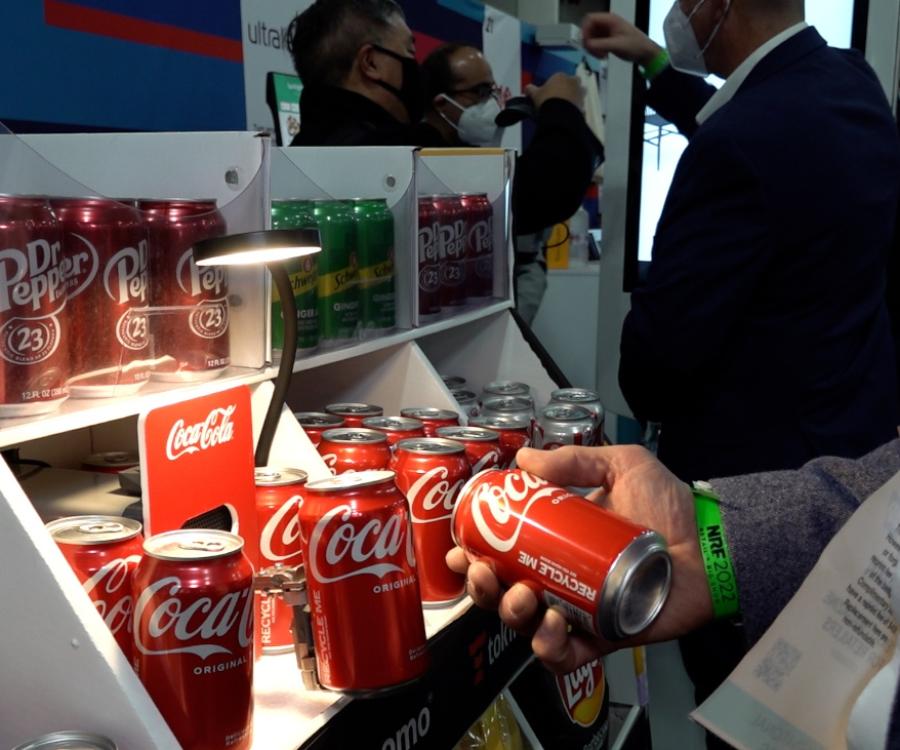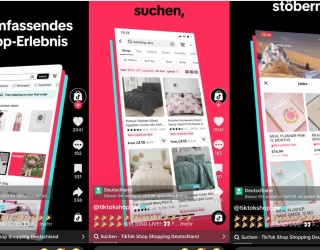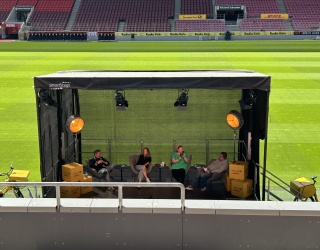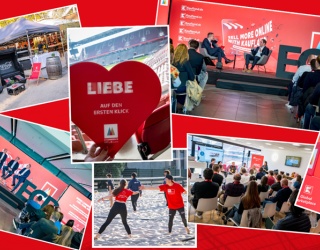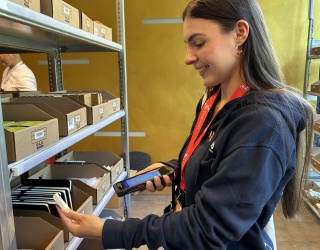You think modern content marketing on digital screens at the point of sale (POS) is reserved for big brands and not for small retailers? Not at all, says Nils Drosin, Co-Founder and CEO of 4Dmagic. He is convinced that if retailers use their bestsellers, their creativity and passion, they can achieve a lot with very few resources.
How do I lure passers-by into my store? Where do I find effective content? And how do I use digital signage profitably at the point of sale? Drosin gives us answers to these and other questions.

Mr. Drosin, why is content marketing so important?
Nils Drosin: It’s so important because we now have such a wide variety of products. 20 years ago, you could buy only sweet or salty popcorn, but today, you’ll have to choose between the most extraordinary flavors and brands. It’s the same with almost any product category, especially when it comes to fashion. This is where marketing comes into play.
The POS is a stage for every retailer to present themself. As a customer, I want to feel comfortable in this place. That goes far beyond the product I want to buy: it includes the furniture, the location, the atmosphere. And content marketing is important for this identity-creating presentation. The motto is: "Come in and experience us!"
So what constitutes good content marketing?
To turn passers-by into customers, it is important to make a broad statement in the shop window or on the facade that arouses curiosity. This can be the offer of the week or the day, or a product film that gives passers-by an understanding of the brand message.
Besides that, it is important to focus on the essentials: "The product is the key." The product must always be number one at any POS. The campaign must be built around the product: What information promises added value and satisfies a need? When, where and how does a customer need which information?
This is precisely where digital media comes in, ideally in real time and automated, to deliver the right content. Used correctly, I can create a so-called pull effect and draw the customer into the store. I always need different content in the store window than inside the store. This is where the orientation phase of a new passer-by begins. And finally, in the fitting rooms, for example, decisions are made, and that's where I go into more detail about individual products. Size charts or style guides could help the customer here.

You have gained experience on the board of the fashion brand CECIL. What advice do you have for small retailers, how can they get advertising content on a small budget?
I think it's secondary whether the retailer is big or small or how much budget they have. It's about figuring out what information you have and how to get images. You can do a lot with product photos and material from manufacturers. In addition, I have often heard retailers complain that they have no content. But when they enthusiastically tell me what they do, it turns out that there are diamonds that only need to be polished. Then I encourage them to make a video or take a few photos of their activities. And that's how we create an individualized content playlist.
All of this doesn't have to be expensive, it just needs to be organized. In my opinion, resources are often spent on communication and sales channels that don't produce that much revenue: Whether it's Facebook or Instagram, selling through platforms like Amazon, or investing in influencers that are hard to control and whose successes are hard to measure.
That's why my key piece of advice is to focus. And critically examine: Which channels are reaching my target groups? Which content has an impact? And is my content still up-to-date?
How does a retailer find out whether their campaigns are having an effect?
There are several ways. For example, we work with frequency measurement in the store and with sales reports. Comparing frequency and sales with the content played at certain points in time can tell us a lot. We even use facial recognition in some cases, which can determine not only what kind of customer is standing in front of the screen, but also how the person reacts to the content.
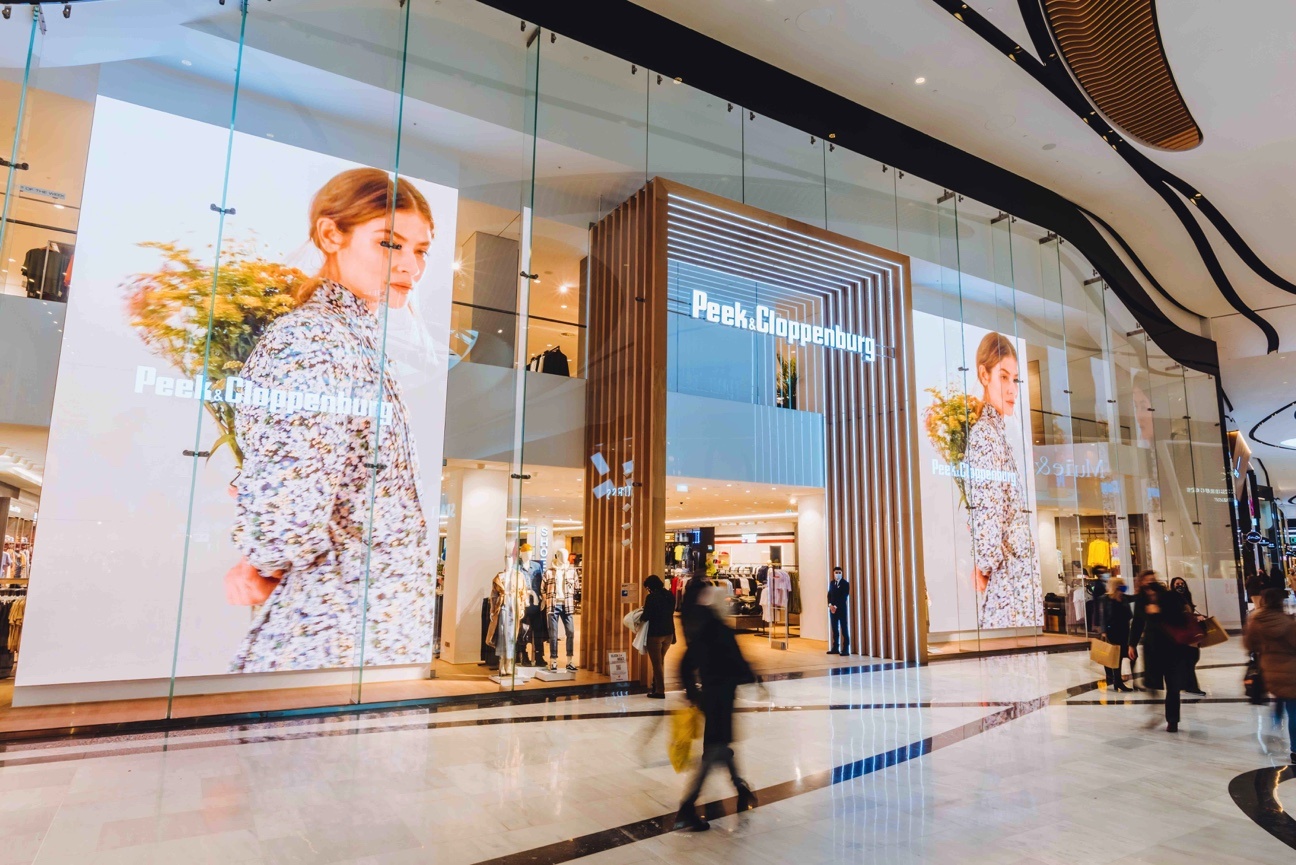
Screens that play videos are communicating in one direction. But a big buzzword at the moment is ‘interactivity’. How important do you think interactive digital signage applications are?
First and foremost, such applications must be easy to use and logically structured. Based on my experience, anything that requires the consumer to register, enter data on a display in the store etc. doesn't work. The same goes for virtual reality, magic mirrors, interactive digital storefronts and similar gimmicks: I don't believe that many customers will make a fool of themselves in front of a shop window or in-store. I suggest: When in doubt, leave it out!
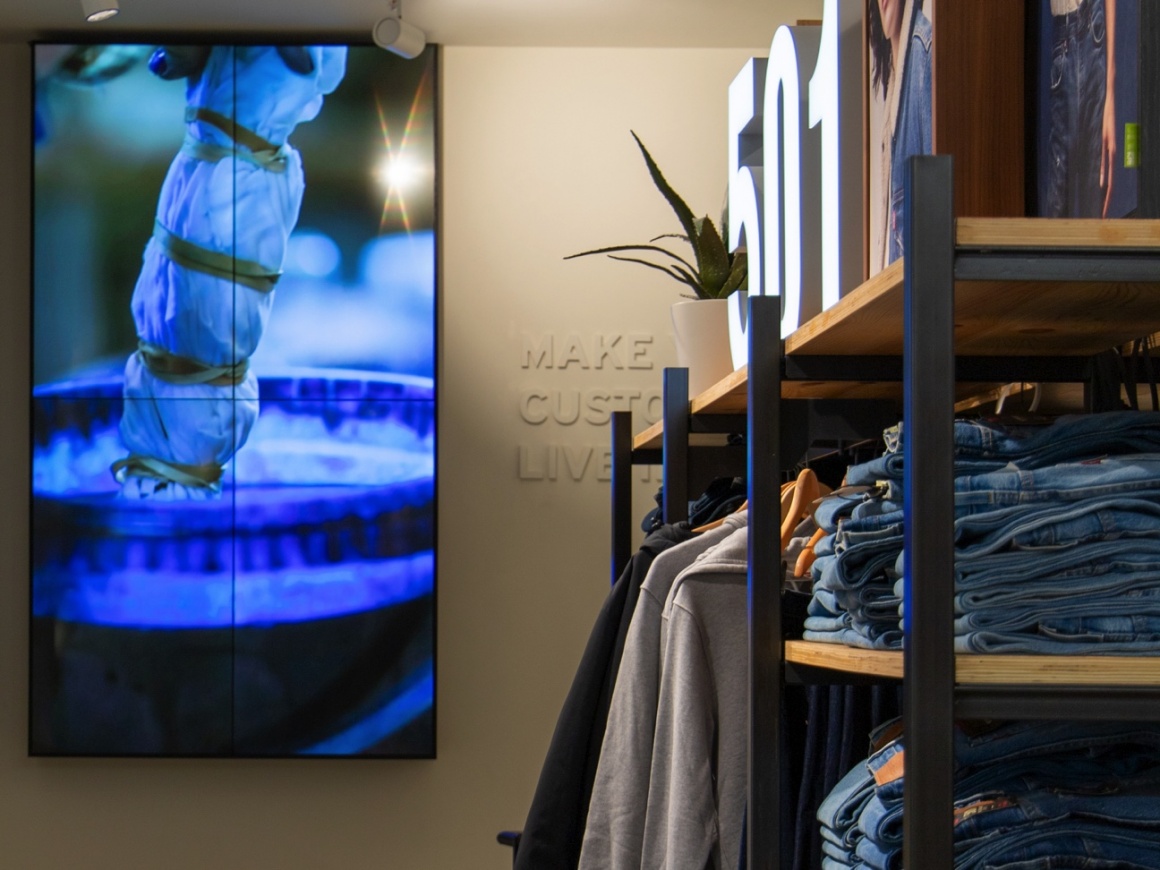
Digital signage is about the ease of good advice. The displays are the communication tools and at the heart of it is the intelligent content management system behind them. Automation is the key here. When the customer scans a QR code or picks up an RFID-chipped item, the CMS system accesses and plays out the relevant content. If retailers have a hot seller in their range – the popular example of the umbrella when it rains – then the corresponding spot must automatically run on the display in the shop window or on the shelf. Technology has to be that simple. And if I can use it to reach my target groups and provide suitable offers or information, then digital signage is being used correctly.
Unfortunately, brick-and-mortar retail has had a very hard time since the Corona pandemic. Are you still optimistic about the future?
As far as I know, customers are still willing to spend more money in brick-and-mortar retail if the service is great. And we have been learning for over a year now how important personal contact is to us. To meet in the city, to go to stores, to drink a cappuccino together – we need that more than ever.
I have traveled all over the world and I love the infrastructure in Germany. We can be proud to have a variety of great retailers and merchants in our cities who run their businesses with heart and soul. I see that as a great opportunity for retail.



